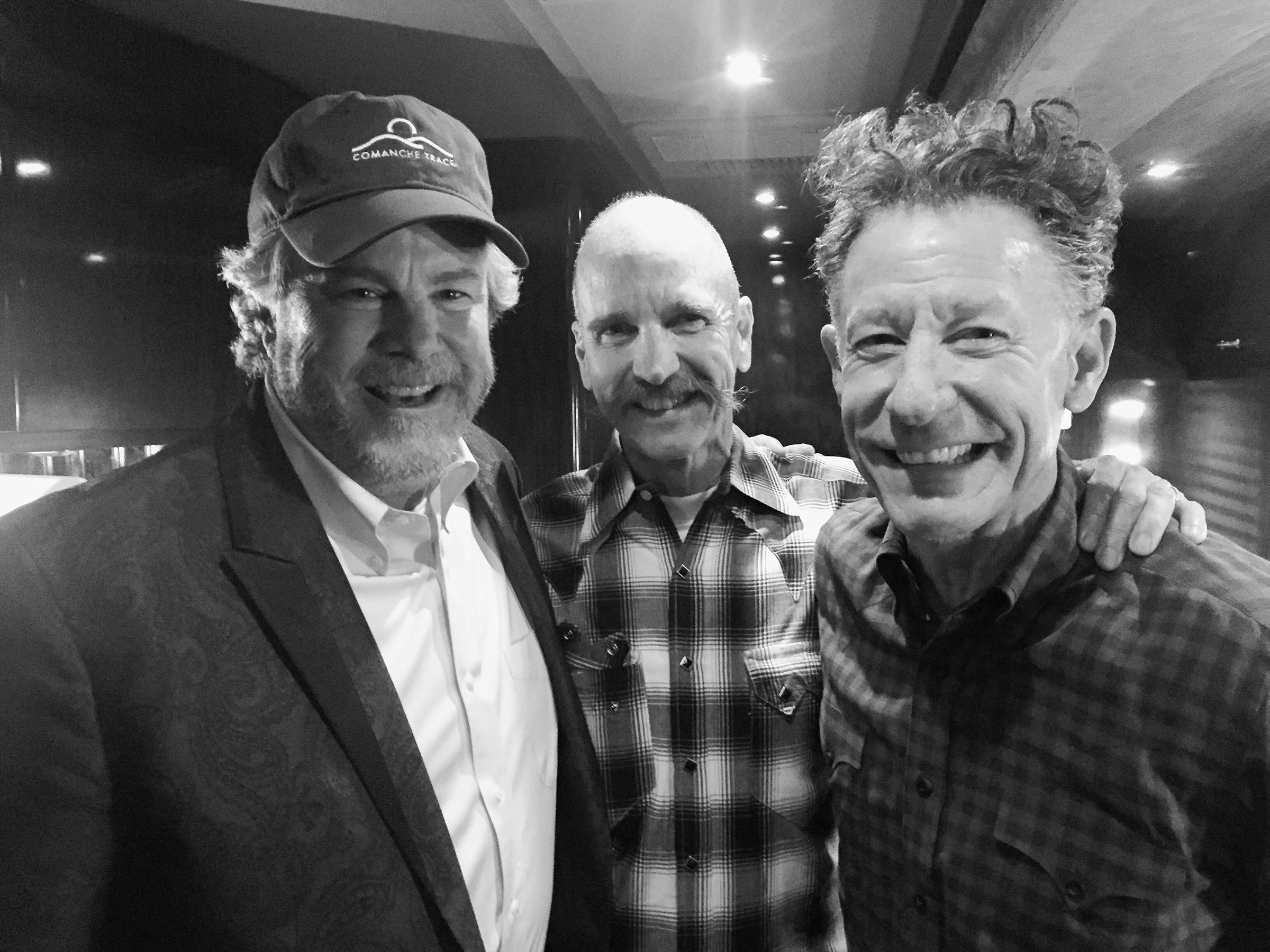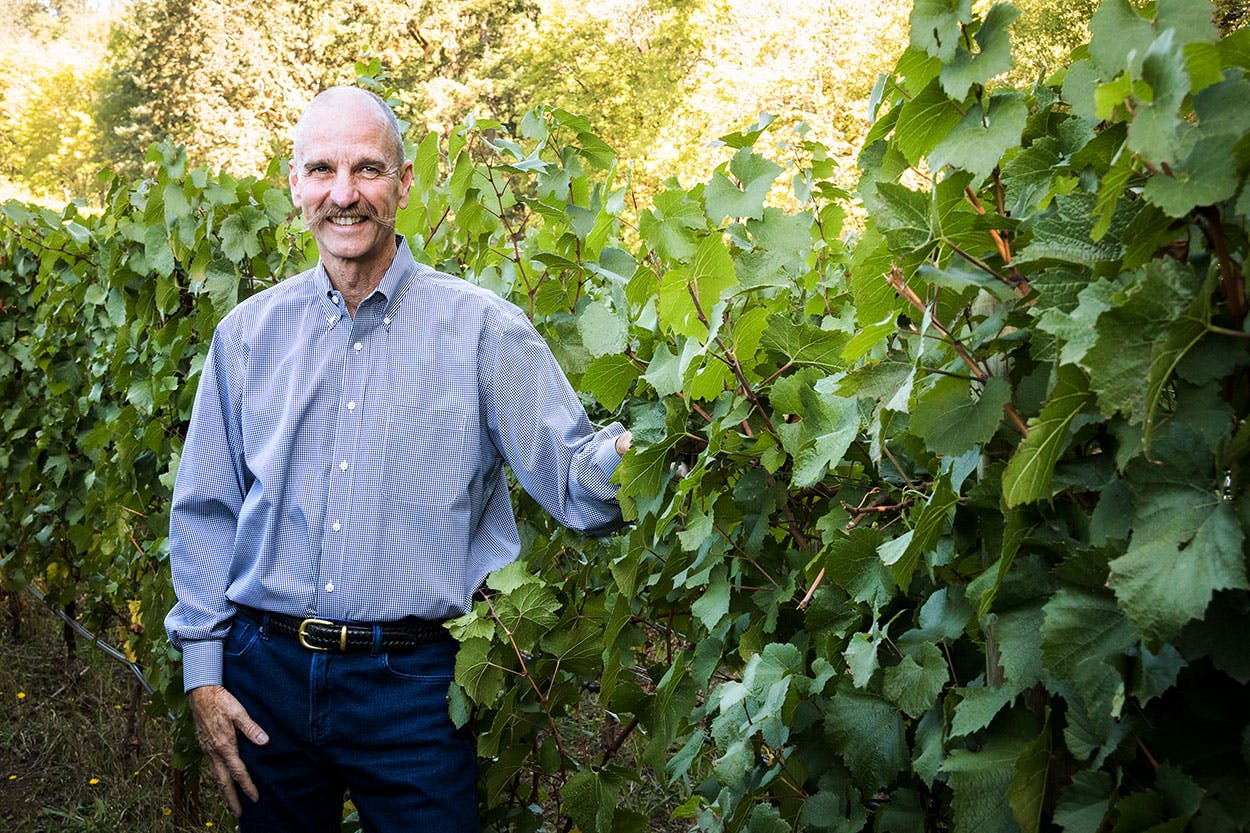In 2000, Texas singer-songwriter Robert Earl Keen invited some of his closest friends to C.A.M.P. at his ranch outside of Medina. “It was coffee, alcohol, meat, and I don’t know what the ‘P’ was,” Keen says. “Don’t make any guesses there, okay?” At C.A.M.P., Keen’s friends took turns sharing their crafts with the group. Among them was a radio host, a home builder, and, of course, musicians—most notably the singer-songwriters Terry Allen, the West Texan who doubles as a visual artist, and Chip Taylor, who penned the hit song “Wild Thing.”
Rollin Soles, who ran in the same circle as Keen and fellow singer-songwriter Lyle Lovett while attending Texas A&M in the late seventies, was also there. When his turn came, Soles and the group headed to Keen’s “scriptorium,” a one-room rock building on a hillside overlooking thousands of acres of Medina River bottom land for a moment of indulgence. “He goes into this beautiful, spiritual explanation of how wine is made,” Keen says. “And we all drank wine and had our own private tasting with Rollin. It was one of the greatest moments I’ve ever had.”

College Station’s role in launching the careers of Keen and Lovett is well documented, centering on a now legendary front porch at the Church Avenue house Keen rented, but few people realize that one of the porch denizens became one of the most celebrated winemakers in the U.S.
Soles was an integral part of establishing Oregon’s Willamette Valley as a bona fide alternative to Napa Valley. Argyle, the winery he cofounded in the late eighties, is also the only American winery in the world to be included on Wine Spectator’s Top 100 list in each of three categories: red, white, and sparkling wine. And it was largely due to Soles’s vision and determination.
Soles, who grew up in the Dallas–Fort Worth suburbs, was first exposed to vineyards and wineries when his family relocated to Jerez del La Frontera, in Spain, when he was in elementary school. As with fellow alums Keen and Lovett, though, Soles’s passion didn’t crystallize until his time at Texas A&M.
Edgar Meyer, a biochemistry professor at A&M who was at the forefront of three-dimensional molecular modeling, had taken Soles under his wing. When Meyer learned of Soles’s plans to backpack through Europe the summer after his junior year, he connected the young microbiology major to his wife’s cousin Hans Ulrich Kesselring, who made wine at his family’s estate in eastern Switzerland.
Instead of continuing with his plans to backpack, Soles hunkered down at Schlossgut Bachtobel, Kesselring’s property overlooking the Alps, for ten weeks that summer. Six-and-a-half days a week he got his hands dirty working the vineyards, learning about what he calls “farming on the edge”—the precision techniques required to make cool-climate varietals in an environment where there is not optimal sunlight and heat to ripen the grapes. This would prove vital to Soles’s future success in the Willamette Valley, where the conditions are similar. “Whenever things get really tough [in Willamette Valley], I just think about Switzerland,” Soles says.
During his senior year of college, Soles applied to burgeoning graduate programs in viticulture (the study of grape cultivation) and enology (the study of wines) at Cornell University and the University of California–Davis and was accepted to both. Soles chose UC-Davis, the Harvard of American winemaking, and enrolled in 1978. He made his first trip to the Willamette Valley in 1979 as a grad student. Named after the river that runs through it, the area is a roughly 125-mile stretch in western Oregon, from south of Portland to around Eugene, flanked by mountain ranges. Soles was gobsmacked. “I drove into the Willamette Valley and I immediately knew that this was the place I was meant to be,” he says. “It’s gorgeous. The potential I figured was going to be extraordinary, which it turned out to be, and the people that were in the vineyards and in the wineries here in the early days were an inspiration.”


At the time of Soles’s first visit, three UC-Davis graduates had already started to put Oregon on the map for winemaking. In the late sixties, David Lett, Charles Coury, and Dick Erath first set up camp in the Willamette Valley. Despite words of warning from UC-Davis peers, who thought the conditions in the valley were too harsh to grow grapes, the three visualized it as an undiscovered promised land for pinot noir. In 1970, Lett produced the first commercial pinot noir in Willamette through his Eyrie Vineyards, earning him the nickname “Papa Pinot” from the locals.
Along with a few others, Lett, Coury, and Erath made up the first wave of winemakers in the Willamette Valley. Soles would lead the second. First, though, Soles would refine his skills working around the world—Napa, Switzerland (again), France, and eventually Australia, where he had followed a girl from the states who was from Adelaide. There, he worked alongside another UC-Davis grad, Brian Croser, at his winery, Petaluma. In the mid-eighties, Croser offered Soles the position of chief winemaker.
“On the job he was always a leader, questioning our methods, which he adopted pretty wholeheartedly but always with a careful scientific assessment of the alternatives,” Croser says. “It is this critical inquiry aspect of Rollin that lifted him above his colleagues at Petaluma.”
Soles, however, wasn’t sure if he could commit to living in Australia for the long haul. Still enchanted by his trip to the Pacific Northwest years ago, he pitched the idea to Croser of opening up shop in the Willamette Valley. Inspired by the efforts of his fellow UC-Davis graduates pioneering the region, and swayed by his star employee, Croser began to drum up investors. With generous funding secured, Soles and Croser purchased an abandoned hazelnut processing plant in the Dundee area of the Willamette Valley and, in 1987, began making wine under the Argyle name.
Argyle’s entry marked the beginning of a new period in the Willamette Valley. Argyle came with an unparalleled level of capital, resources, and technical knowledge. In concert with Argyle’s arrival, Robert Drouhin, a third-generation winemaker from the Burgundy region of France, moved into the Willamette Valley and established Domaine Drouhin Oregon. Drouhin also brought financial might, as well as generations of Old World experience. “We’ve not been the same since,” Soles says. “The Willamette Valley would not be what it is today without those two investments.”
It wasn’t just financial backing that Soles brought with him from Australia. Screw caps were a common enclosure for wine in Australia and New Zealand, and Soles initially used them in still wines as an alternative to corks, which had become susceptible to bacteria that could taint the wine. Over time, as the potential for taint was remedied, screw caps became more about utility and aesthetic. “I’m not making wine for the Romans,” Soles says. “I’m more interested in using the best packaging and the best closure I can. We work too hard in the vineyard and in the winery to produce beautiful wines and then to use old technology to close the bottles is silly.”
There is a continued perception among wine drinkers that bottles with screw caps are inferior, but Soles thinks that’s unfounded. According to him, there is little to no drop-off in quality or how the wine ages with a screw cap.
“There’s still some controversy surrounding screw caps now, so you can imagine it was even worse then,” says Jordan Mackay, a James Beard Award–winning beverage and food writer who has authored such books as Passion for Pinot: A Journey Through America’s Pinot Noir Country, as well as a Texas favorite, Franklin Barbecue: A Meat-Smoking Manifesto. “I respect the hell out of Soles for making his decision and not backing down.”
Still, what Soles will likely end up being best known for hasn’t happened yet. In the early years of Argyle, Soles and Croser realized that the Willamette Valley was primed for making sparkling wine. This was a major discovery. Sparkling wine in the U.S. had been dominated by California, first with Korbel in the nineteenth century, and then in the late 1970s and early ’80s, when French champagne houses like Roederer, Mumm, and Taittinger started colonizing California.
Making sparkling wine requires significant time and capital, but Argyle was all in from the beginning. That was a serious gamble, especially when there wasn’t even a history of a market for such a product—and when Soles’s fellow winemakers thought he was nuts to want to do so. Since then, though, others have begun following suit.
“The recognition of Oregon for sparkling wine is probably ten to fifteen years from now because for a region to be recognized for something you can’t just have one really successful player,” says David Adelsheim of Adelsheim Vineyard, a member of the Willamette Valley’s first wave. “The vision that it took—thirty years ago—for Rollin to come up with this, and to be persistent over the years that this really was important, that’s a level of creation, invention, and ultimately stick-to-it-iveness that is extremely rare in the wine industry.”
In 2013, Soles’s run at Argyle came to an end. In the previous decade, Petaluma was acquired and Argyle was absorbed. The timing was right for him to make his exit and focus on his personal winery, ROCO, started in 2001 on land purchased in 1987. There, among a vineyard named Wits’ End, Soles and his wife, Corby, make small lots of wines in the Willamette Valley holy trinity: pinot noir, chardonnay, and sparkling wine.
Willamette Valley’s stature continues to rise in tandem with the increased popularity of Portland, which is only about an hour drive away. There are now more than 500 wineries in Willamette. Tasting rooms are being revamped, and new accommodations are on the horizon. As more winemakers and tourists propel Willamette Valley into a third wave, will Soles and his cohorts be able to manage the growth without sacrificing the purity?
“There’s a general and specific trend in the Willamette Valley to do things right for the long term,” Soles says. “As a very new wine region, we have the responsibility to set things up for future generations.”
Thanks to a new enology certificate offered at Texas A&M for students interested in pursuing a career in the wine industry, that’s bound to involve more Aggies.
- More About:
- Libations






